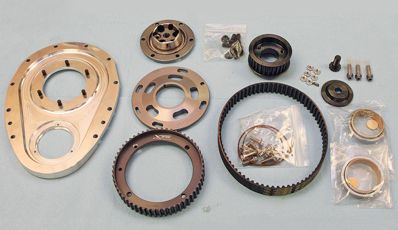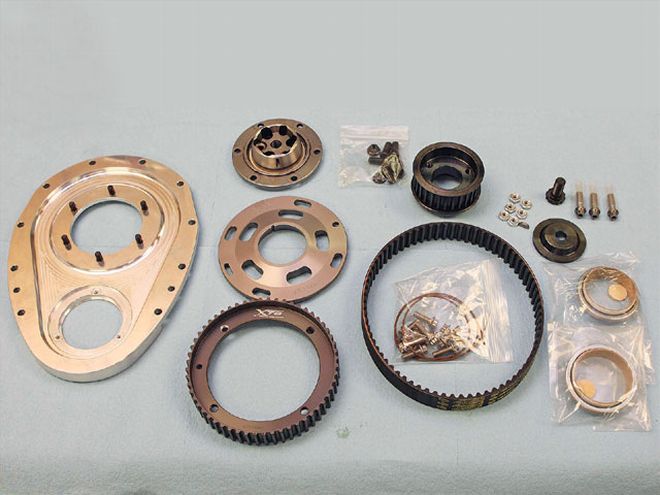
 A quality beltdrive timing system not only uses less horsepower than a conventional timing chain setup, but it can also dampen power-robbing valvetrain harmonics.
A quality beltdrive timing system not only uses less horsepower than a conventional timing chain setup, but it can also dampen power-robbing valvetrain harmonics.
Beltdriven timing systems are nothing new in racing. Their usefulness was first proven in NASCAR's Sprint Cup Series, and since then the technology has trickled down to Dirt Late Model racing, the ARCA series, and other upper-level racing classes.
Although they are more expensive than a traditional timing-chain system, a beltdrive has several advantages that can show up on the race track. First, the belt helps absorb power-robbing harmonics in the engine. This helps smooth out the impulses transmitted to the camshaft and valvetrain and can improve overall control of the valvetrain. A belt also doesn't stretch over time, and it won't develop "slack" in the system like a chaindriven system can. Also, a belt system with intelligently designed cogs that mesh well with the pulleys works much more efficiently than a chain and will sap less horsepower from the engine-meaning more power to the rear wheels. And finally, if you feel you will need to make camshaft timing adjustments, a belt system is definitely the way to go because it does not require oil, and therefore, can be made to be easily accessible to so you can make your changes on an adjustable cam pulley.
Normally, one of the biggest complaints about using a beltdrive timing system is the hassle of getting it properly installed. Traditional beltdrive systems use packs of shims to set the camshaft endplay. Not only was finding the right combination of shims time consuming, but they often had to be modified with oiling holes to keep them from burning up or galling against the drive.
CV's new Xceldyne beltdrive timing system does away with all that by replacing the shim packs with an innovative new thrust bearing. In fact, this new "Low Drag Cam Thrust Bearing Assembly" is so innovative it was awarded patent number 7,331,319 this past February. CV says its new thrust-bearing design utilizes "precision-ground 44c stainless ball bearings in a perfectly balanced assembly" which eliminates the cam hub, seal plate, cam shims, and Torrington bearings found in more standard beltdrive systems. The bearing is lubricated by engine oil from inside the crankcase, eliminating the need for special oiling arrangements. The oil seal is also built into the bearing to further simplify the assembly.
To get a better idea of how CV's new beltdrive timing system works, we stopped by the shops of KT Engine Development in Concord, North Carolina, while owner Ken Troutman installed a kit on an engine to be raced in the ARCA series. CV says kits should also be available for Ford small blocks by the time you read this.